We stayed an extra day in Ventspils to wait for the swell to ease and hoping for a kinder sail for the 61nm to Kuressaare. This paid off and we had a great passage, much of it with the jenniker set to give us useful extra speed and we were in Kuressaare by 7:00pm.
Kuressaare is the capital of the largest Estonian island Saaremaa. The Estonian islands are mostly set in very shallow waters riddled with rocks lurking below the surface and it is essential to follow the marked channels. We arrived to find a summer festival taking place centred on the harbour and it was crowded with all manner of craft. The Estonians are very keen sailors, not put off by strong winds or shallow waters. Perhaps they particularly relish boating as all private boats were ordered to be destroyed in Soviet times lest they be used to escape to the West. The harbour was filled with many youngsters in small Optimist dinghies flying around like midges while adults watched from the pontoons. Music is very important for the Estonians – music and Estonian Rock were central to the Singing Revolution that led to independence from the Soviet Union – and it is everywhere in the festival. To us, the melodic and folk songs were more appealing than the Heavy Metal competing from the other side of the harbour. By Sunday quiet was restored and all cleared away. Not a bit of litter left behind – UK note! We paid a visit to the ancient bishops’ castle.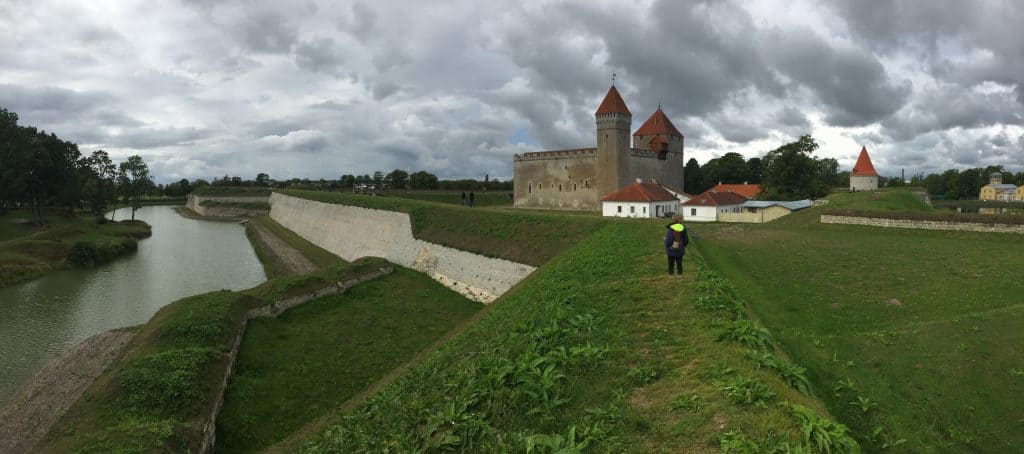
On Monday we sailed 42nm to the small island of Ruhnu, located in the centre of the Gulf of Riga. The wind was very variable and unsettled but we made it thanks to the jenniker, when little wind, and just the genoa, when too much wind.
Ruhnu is a fascinating island. It has been part of Estonia since the country’s formation in 1919, but had been inhabited by a community of Swedes since at least the 12C and they continued to live according to Swedish customs and law.
Readers of this blog may be aware on Tony’s interest in the author Arthur Ransome. After he left Russia in 1919 he moved first to Tallinn and later to Riga. It was here that he learnt sailing and his seamanship. He had a yacht built and cruised in 1922 from Riga to Helsinki and back. Their first stop out from Riga was Ruhnu and in his book Recundra’s First Cruise (which we have both been reading on board) he described the island and its insular way of life. Its population then was almost 300. They wanted nothing of the outside world and needed to be self-sufficient, for a steamer called at the island once per year.
All this was later to change, for in 1944, with the impending return of the Soviets, all but two of the families fled to Sweden. When the church bell was rung after their final service, it cracked, as if to signal their way of life had come to an end. And indeed it had.
Now the island is inhabited by around 90 Estonians. The old wooden lighthouse visited by the Ransomes has been replaced with a steel one designed by no less than Gustave Eiffel.
Today there is a proper harbour, complete with some yacht berths and, this being Estonia, first class WiFi and Internet access. The island has its own ferry which runs six days per week.
Despite these modern amenities, the island seems unspoilt and has retained its ancient wooden buildings.
There is now a library, a small shop and we discovered a café in a lovely old wooden house – there was nothing so vulgar as a sign to draw attention to it. There we were able to have tea and later some lunch. The room had many artefacts from the past, such as weaving shuttles bearing runic inscriptions. The cooking range still smelt of all the times it had heated the home. This house and many others we saw still rely on traditional outside privies.
We found it very quiet and peaceful on the island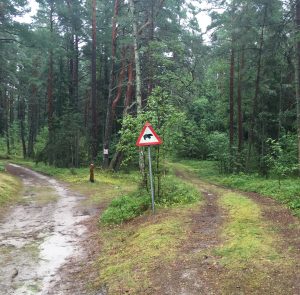 and enjoyed a walk to the lighthouse through the ancient forests with their giant pine trees. And the sign in the forest warning of a bear? In the spring of 2006, a 150-kilogram brown bear arrived on Ruhnu via an ice floe across the Gulf of Riga from the mainland of Latvia, some 40 km away. It has probably returned the same way – but you never know!
and enjoyed a walk to the lighthouse through the ancient forests with their giant pine trees. And the sign in the forest warning of a bear? In the spring of 2006, a 150-kilogram brown bear arrived on Ruhnu via an ice floe across the Gulf of Riga from the mainland of Latvia, some 40 km away. It has probably returned the same way – but you never know!
Most special of all for us was a visit to the wooden church built in 1664 and which had an extraordinary feel to it.
On 17th August we sailed the 58nm south to Riga, so we were back in Latvia. Riga lies 8nm up the River Daugava, which is a massive broad river rising in Russia and over 1000km long.
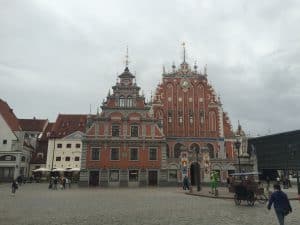 Riga was another important Hanseatic city and is now the capital of Latvia — a vibrant city with many cafés and street restaurants. If it happens anywhere in the Baltic, it happens in Riga.
Riga was another important Hanseatic city and is now the capital of Latvia — a vibrant city with many cafés and street restaurants. If it happens anywhere in the Baltic, it happens in Riga.
Its ancient buildings were largely destroyed in WWII but are being lovingly restored – see for example the House of The Blackheads.
Riga is noted for its Art Nouveau buildings, perhaps the finest anywhere. In the central area about ⅓rd of the buildings are of this period and mostly restored after the devastation. Here are just a few – click to see more detail.
We replenished our stocks at the vast market – said to be the largest in Europe. The indoor sections have been created in five huge buildings build from former Zeppelin hangers, with different halls for fish, meat, vegetables etc. The stalls of wild mushrooms were amazing and we feasted again on these forest delights.
The city is blest with some lovely green spaces, especially along the canal, and we enjoyed refreshments in one of the many cafés, which are quieter than in the tourist hub.
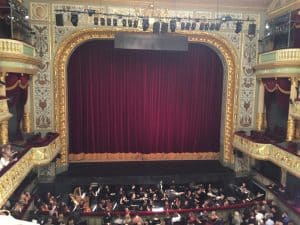 On Friday night we went to see the ballet Raimonda, which was being performed in the magnificent Latvian National Opera and Ballet House, whose restoration was completed in 1995. It was a classic production and we enjoyed it enormously. It is good to have this at an affordable price rather than it being exclusive. We noted the number of families with several children in the audience. In the intervals young girls could be seen practicing their ballet moves.
On Friday night we went to see the ballet Raimonda, which was being performed in the magnificent Latvian National Opera and Ballet House, whose restoration was completed in 1995. It was a classic production and we enjoyed it enormously. It is good to have this at an affordable price rather than it being exclusive. We noted the number of families with several children in the audience. In the intervals young girls could be seen practicing their ballet moves.
We sail north east from Riga tomorrow, Sunday, and will soon be back in Estonia – more news then.
Tony & Ynskje x

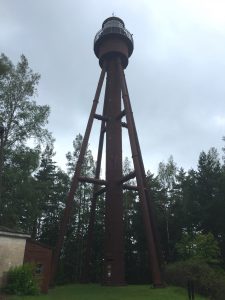














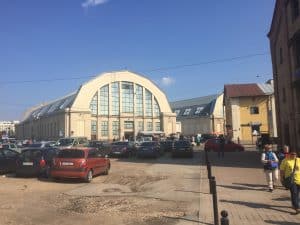
All very interesting especially the Arthur Ransome bit. We flew over the Riga peninsular to get here to Australia and waved to you! All the best and love Liz and Caroline.
Hi Tony and Ynskje.
Great to follow your adventure this way. We had a Baltic cruise last September with Fred. Olsen, one of the smaller cruise lines! We remember our Riga stopover as one of the highlights.
We were having dinner on our departure from Riga and suddenly the ship listed significantly to port. A few meals went sliding off waiters’ trays and my wine glass was a useful ‘spirit’ level! It was several minutes before we were back on an even keel. No explanation was forthcoming! Perhaps slightly on the edge of the channel, who knows? We made it back anyway. 😉
Enjoy
David H
Ha Ine and Tony,
Ine will translate, I suppose: terug in Riga, wat leuk voor je om daar weer te zijn. Een deja-vue met de prachtige art-deo huizen in Riga. Ze zijn er gelukkig nog steeds!!!!!
Net terug van een “glampeervakantie” met 5 vrouwen en 2 pubers aan een spaanse costa. Was weer een topper.
Nu voorbereiden voor mijn droomreis naar Namibie! Blij jullie volgen, liefs, heleen